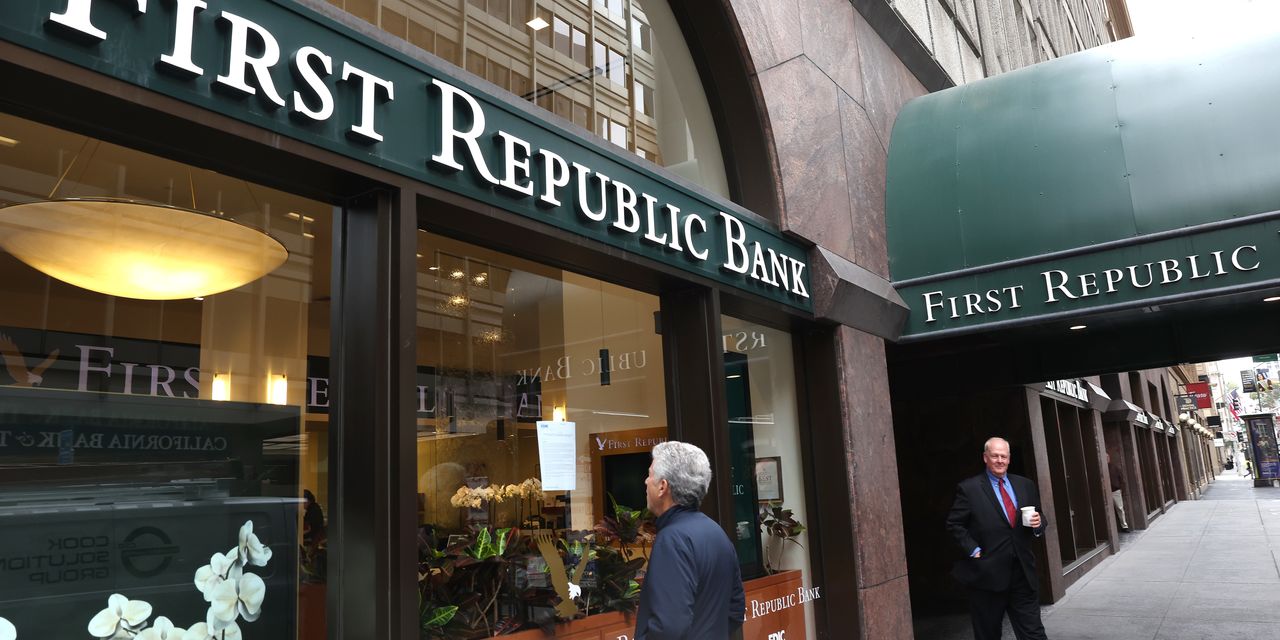The ongoing banking crisis is unnerving Americans in a way that hasn’t been seen since the Great Recession, according to a new poll.
Nearly half of people are worried about their money’s safety in banks, Gallup pollsters said as a new round of regional bank anxiety swirled around more banks, including PacWest Bancorp
PACW,
and Western Alliance Bancorp
WAL,
In Gallup’s poll, the 48% of people who said they were worried about their deposits consisted of 19% who said they were “very worried” and 29% who said they were “moderately worried.”
Pollsters spoke to people in April, a month after a bank run pulled down Silicon Valley Bank, and Signature Bank failed shortly after that. On May 1, JPMorgan Chase & Co.
JPM,
acquired all deposit accounts and most of the assets from the shuttered First Republic Bank.
First Republic Bank had $213 billion in consolidated assets, making it the country’s second largest bank failure, behind Washington Mutual, which had $307 billion in consolidated assets.
Washington Mutual failed in September 2008, and JPMorgan acquired it as well.
In September 2008, 45% of people told Gallup they were “very” or “moderately worried” about their money. That’s three percentage points lower than the latest poll.
The current moment puts jittery bank customers in an awkward spot. Even if more people are nervous about the safety of their money, interest rates that banks are offering on savings accounts and CDs might be at their peak.
Deposits are insured up to $250,000
It’s not clear how much of the worry comes from unfamiliarity with deposit-guarantee rules, or if it’s worry about a deeper systemic risk for the banking system, Gallup notes.
To be sure, other polls point to the latter. Nearly three in ten people (29%) said they were “very concerned” about banking stability, according to a JD Power survey last month. At the same time, 19% said they were very concerned about the stability of their own primary bank.
The Federal Insurance Deposit Corporation insures deposit accounts up to $250,000. The National Credit Union Administration offers the same coverage up to $250,000 on the deposit accounts offered by credit unions.
This account coverage includes checking accounts, savings accounts and certificates of deposits (CDs).
Deposit-account insurance temporarily climbed to $250,000 from $100,000 in October 2008. The $250,000 coverage limit became permanent in 2010.
After Silicon Valley Bank and Signature Bank shuttered, depositors got access to all of their money, even the amounts above the $250,000 threshold.
As the Federal Reserve increased interest rates to address skyrocketing inflation, Silicon Valley Bank was sitting on paper losses from the high quality, rate-sensitive investments while depositors wanted their money back in early March.
As early as 2021, Federal Reserve regulators said they were cautioning Silicon Valley Bank management about the bank’s exposure to rising interest-rate exposure.
The banking sector is “sound and resilient” and conditions have improved since early March, Federal Reserve Chairman Jerome Powell said Wednesday after announcing the 10th straight interest-rate increase.
‘Running out of time’ to fix problem
On the flip side, critics like hedge fund titan Bill Ackman, CEO of Pershing Square Capital Management, say “we are running out of time to fix this problem.”
There has to be “a system-wide deposit guarantee regime now,” he said.
Earlier this week, the FDIC recommended that lawmakers should raise the account-coverage cap on business payroll accounts.
On Thursday morning, investors were gauging what’s next for banks. Western Alliance said in a statement it was “categorically false” that it was eyeing a sale, denying a report from the Financial Times.
As a whole, regional bank stocks remained under pressure. The SPDR S&P Regional Banking ETF
KRE,
was off more than 5%, while the Dow Jones Industrial Average
DJIA,
was down by more than 300 points, or 0.9%. The S&P 500
SPX,
and the Nasdaq Composite
COMP,
were lower by 0.6% and 0.3%, respectively.
Read the full article here












